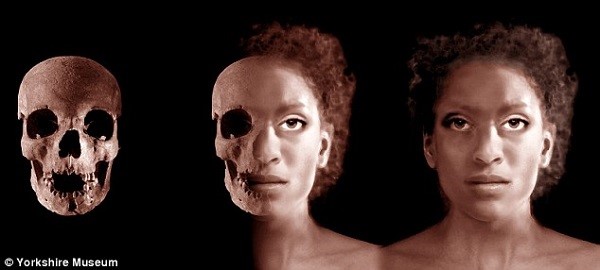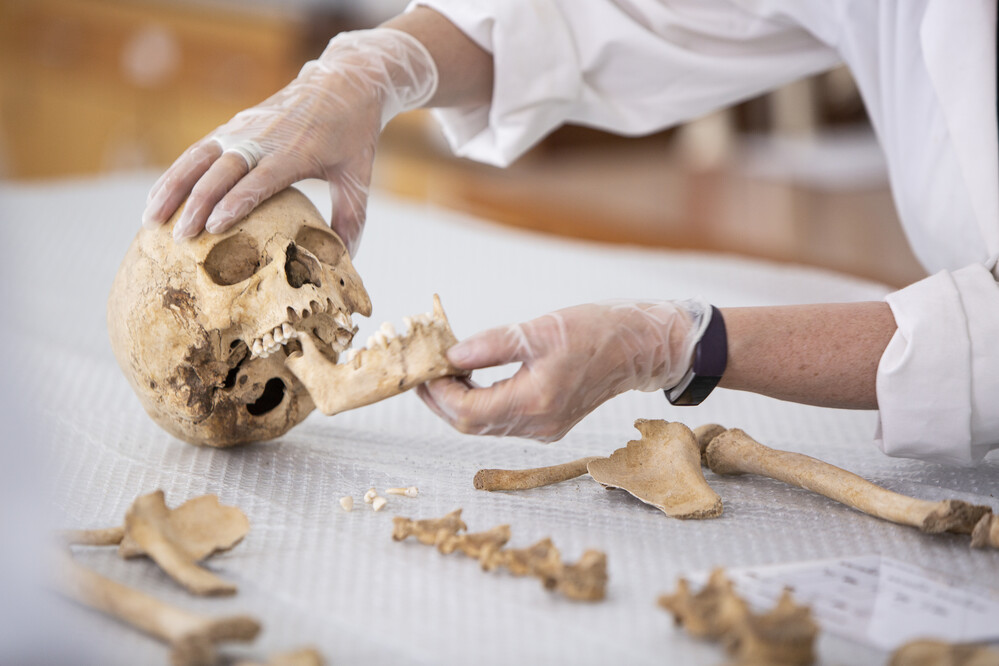A long way from home: revealing the ethnic diversity of Roman Britain
Contrary to received wisdom, Roman Britain was a place of ethnic diversity. A project exploring the cultural and biological experience of immigrant communities during this period has led to a reappraisal of the Romans in Britain.
Discovering the diversity of the Romano-British population
This research project, an innovative combination of scientific and archaeological techniques, was led by Dr Hella Eckardt of the University of Reading.
Dr Eckardt and her colleagues combined the analysis of archaeological finds such as grave goods and burial rites with forensic assessments of skeletal remains. These included studying the geographical origins of 150 individuals from late Roman Britain by measuring the levels of particular chemical markers (isotopes) in their bones and teeth.
Migration from across the Roman Empire
They found that a significant number of the individuals were migrants, many with mixed-race ancestry, particularly in the late Roman settlements of York and Winchester. Significantly, the migrant populations also included women and children, which conflicts with the popular view that it was mainly adult males who moved across the Roman Empire.
“There is no doubt that there were people from other parts of the world in Roman Britain. There was already evidence from inscriptions – for example, North Africans are attested on Hadrian’s Wall – but our research shows the presence of people from areas such as Germany, Poland, and the Middle East, as well as from Africa. There was undoubtedly more diversity among Romano-British populations than previously thought,” explains Dr Eckardt, who recently won the prestigious Current Archaeology ‘Archaeologist of the Year’ award.
Bringing history to life and changing perceptions
As part of the project, the team brought the stories of some Roman Britons to life, including the ‘Ivory Bangle Lady’, a mixed-race female from York who had been buried with rich exotic and local artefacts. The Ivory Bangle Lady now features in educational workshops and a video, which has been shared widely on social media. Dr Eckardt says: “she illustrates African migration, possibly in the second generation, as well as female mobility and high status.”
The success of this project has led to follow-on-funding from AHRC and a collaboration with the Runnymede Trust that has helped develop a range of online and museum teaching resources that have been shared with thousands of school children. The website is changing teachers’ and children’s view of the Romans, providing engaging educational materials on migration, diversity and archaeological evidence. Thanks to widespread media coverage, the research findings have changed public perceptions.
Creating controversy
But not everyone has been willing to accept the team’s findings. Some people feel that educational materials depicting African Romans are a product of ‘political correctness’, and that immigrants would not have held positions of authority.
A ‘Twitter-storm’ erupted in August 2017 over a BBC cartoon which depicted a high-ranking black soldier in Roman Britain. But, says Dr Eckardt the cartoon and, more than that, its underpinning research, is: “entirely accurate. The vehemence of some responses just goes to show how fascinating Roman Britain is to so many people and how relevant archaeological research can be to current debates.”
Fast Facts
- Dr Eckardt worked with colleagues Drs Mary Lewis and Gundula Müldner in an AHRC-funded project on mobility and diversity in Roman Britain.
- These included studying the geographical origins of 150 individuals from late Roman Britain by measuring the levels of particular chemical markers (isotopes) in their bones and teeth.
- The new findings has led to follow-on-funding from AHRC and a collaboration with the Runnymede Trust also prompted a redesign of the ‘People of Roman York’ gallery at the Yorkshire Museum, as part of a complete refurbishment in 2010
- The new ‘People of Roman York’ gallery display features the skulls, facial reconstructions and ‘life-stories’ of six individuals studied by the research team, highlighting the diversity of the Roman population


